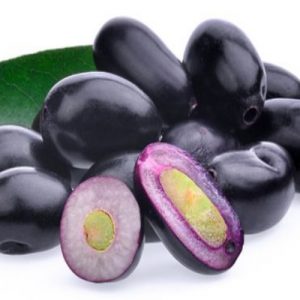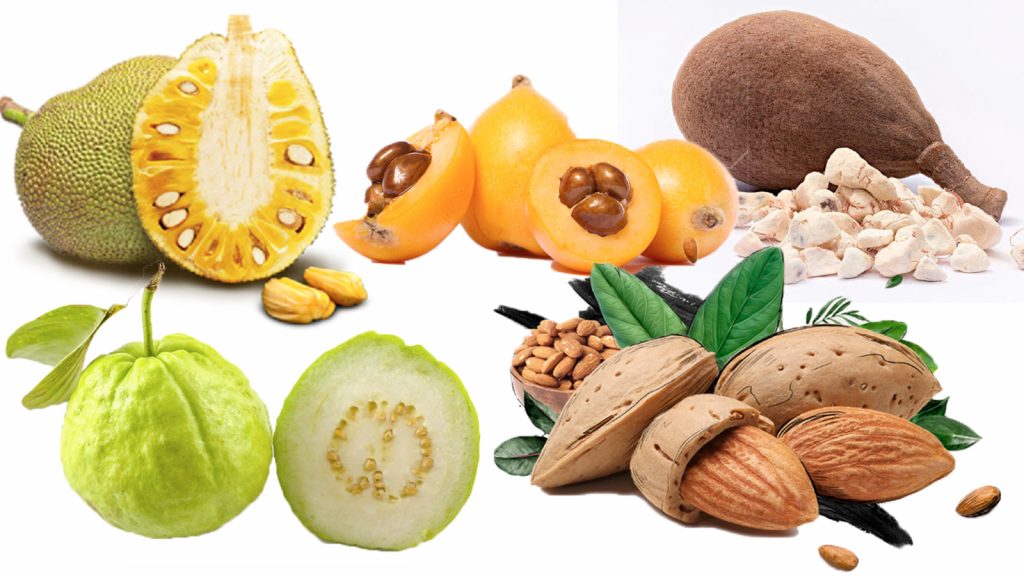These are fruits that have been neglected commercially and are also rarely found in the markets for consumption. Therefore they are localized and little or no research has been done on them by research organizations. However they are natural sources of nutrients and have lots of health benefits.
Despite being underutilized and being grown on a small scale, the fruits have contributed to the
economic growth of small households. Nevertheless their nutritional value and economic benefits have received attention and there is need to popularize, promote, add value and commercialize the fruits. In addition implementation of the national policies on underutilized fruits, interest by researchers, farmers, extension officers should be fast tracked and enhanced. This will contribute towards food security and dietary diversification. Some of the underutilized fruits include;
Castor Apple
Castor apple is also known as custard apple. It contains antioxidants and is high in nutrients and
minerals. It can be planted from both seedlings and seeds and more so during rainy season. Fruits bear in 3-4yrs and flower at 1-2yrs. It does well on sandy loamy soils mixed with organic matter and requires irrigation and mulching for soil moisture retention.
The apples are harvested when the fruit shall have turned from green to yellow. They are perishable hence the need for good storage and early disposal to markets. Ice cream and juice can be processed from the fruit. It has local and international market, mainly Europe.
Tamarind

It is popularly and locally known as ukwaju. Tamarind is rich in Vitamin B and minerals. Likewise, its root, bark and leaves have medicinal values. It does well in tropical climates though it can withstand drought conditions quite well.
It takes 5-6yrs if grown from seed and -5yrs if grafted. After the first 4yrs, prune the tree to remove dead branches and water buds. Tamarind produces juice, sauces and flavor (ice cream) as value addition.
Loquat
It mostly eaten as a fruit and its leaves are used for making tea. Furthermore, it is an ornamental plant. Loquat is very high in antioxidants and carotenoid antioxidants which boost the immune system. It does well in warm subtropical climates in any type of soil with organic matter added to it to loosen and improve drainage. The fruit contains 3 -5 seeds that can be used to propagate new trees. Some varieties are self-pollinating while others need to be paired for pollination to take place. It has shallow roots hence the need for caution during weeding and mulching for protection.
Additionally it requires deep watering, organic fertilizer, pruning to stop tree from growing tall and thinning to improve on the quality of the fruit. Loquats begin to bear fruit at 3-4 years. It is ready for harvest after 3 months of full flowering. For value addition, jam, wine, sauce etc. can be processed from the fruit.
Guava
It is listed as one of the underutilized fruits. The fruit grows in the wild and on farms in any climatic conditions except in arid areas. It is high in Vitamin C, essential oils and minerals. In addition the bark and leaves contain very high antioxidation values.
Guava grows from seed or tree (cuttings and layering). From seed it takes up to 8yrs to produce fruit and 3-4yrs from tree. It is perishable as it lasts 2-11 days depending on varieties and methods used for storage. Freeze-drying of guava and guava pulp can be used for preservation. Any delays in reaching the markets result in high post – harvest losses. For value addition juice, jam, wine etc. can be processed from the fruit.
Jack Fruit
It is highly rich in Vitamin A. Jack fruit requires well drained, rich sandy and loamy soils and it grows from seed and tree (cuttings and grafting). It bears fruit at 3-4yrs old. A tree produces averagely between 100 and 200 fruits per year. After harvest the fruit can be processed into pulp, and juice. The seeds can be boiled or roasted and eaten as nuts.
Almonds
It is listed as an underutilized fruit. Almonds require loam soil with proper drainage. It grows from seed and grafting and does well in hot weather and mild cold conditions. Above all it is highly nutritious and rich in healthy fats, antioxidants, vitamins and minerals. Besides it can be sold raw or roasted and produces almond milk, oil butter, flour etc. Lastly it takes 5-12yrs to start producing fruit which can last up to 25yrs.
Canola
Firstly the seed is planted not so deep into the soil for it to germinate, therefore avoid fertilizer coming into contact with the seed. Secondly it prefers cool temperate areas. Moreover it is good for crop rotation.
It takes 80-150 days to mature and machines e.g. combine harvesters, are used during harvest. Canola fruit contains Omega 3, and fatty acids and can be blended with honey, herbs, chilli and raspberry to make other products.
Certainly it has a huge unmet demand (industrial and domestic) that guarantees a ready market both locally and internationally.
Zambarau

It goes by other names like purple fruit, black plum, java plum, jamun fruit etc. It grows from seed and is rich in fiber and antioxidants. The purple fruit does well in well drained, fertile soil with organic matter. It starts to bear fruits after 8-10yrs after planting. The grafted seedlings take 6-7yrs to fruit. Subsequently it will continue to bear fruits for a long time. Smoothies, meal recipes, desserts, vinegar, cider, wine, juice, jam, syrup and ice cream can be made from the fruit.
Baobab/Mabuyu
Baobab is categorized as a super food. It grows around the coast and in Kitui and has a variety of species which produce fruit. The grafted trees take approximately 5yrs to fruit with little watering. The leaves, seeds, fruit pulp and bark of the baobab tree can be used to make food, medicine and household goods.
It is rich in Vitamin C, fiber and antioxidants. After drying and grounding, its powder can be added to smoothies, salads, juices etc. In addition it can produce cosmetic oil and husk which can be used as a source of renewable energy.
Gooseberry
Gooseberry grows wild in a number of areas in Kenya. It is reach in Vitamin A, B, C and Iron. The fruit contains small numerous seeds that can be dried and used for propagation. It does well on well drained loam soil enriched with organic matter and takes 3-4 months to bear fruit after transplanting and continues up to 2yrs if properly maintained.
Harvesting takes place between 60-100 days after flowering, for every 2-3 weeks and lasts 3-4 months, twice in a year. Thereafter, store under shade in a well aerated room in clean and dry crates. There are different types e.g. Cape gooseberry, Golden gooseberry, Yellow gooseberry etc. Jam, Juice, Wine can be processed from the fruit.
